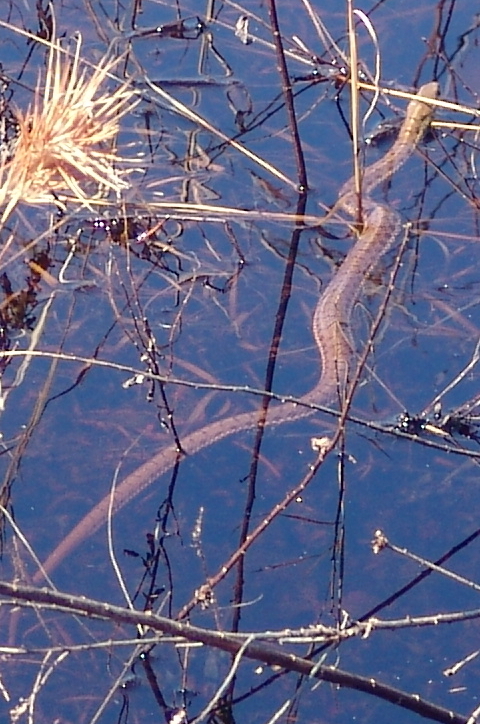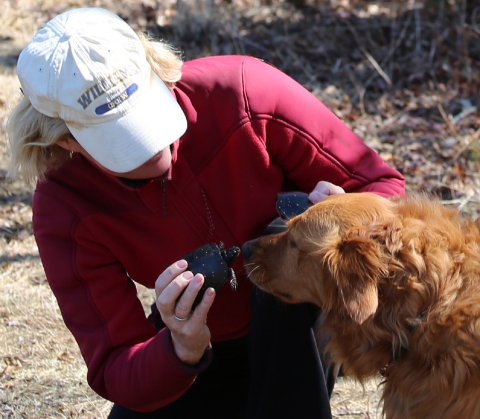Large Garter Snake (Thamnophis sirtalis) in SouthCoast Bog
Turtle Journal explored the SouthCoast wetlands surrounding the abandoned Goldwitz cranberry bog in Marion on Thursday afternoon. As we crossed a hard-packed, dirt road, we startled a large garter snake (Thamnophis sirtalis) — the Massachusetts state reptile – basking atop the warm roadway.
Large Garter Snake (Thamnophis sirtalis)
And, yes; the snake startled us, too. Its color scheme blended perfectly with the compact sand, and as it lay motionless, the snake was nearly impossible to detect … until it began to slither toward the swamp. We compared its length to our boot size to obtain an eyeball approximation of 2.5 feet.
Rufus the Turtle Dog Tracks Garter Snake
Rufus proved particularly amused by the snake. Reading her mind, I saw a cartoon bubble exclaiming, “Wow! A stick that actually throws itself.” She thought she had found the perfect doggie toy.
Garter Snake Slithers into Abandoned Cranberry Bog
Sliding down the bank, the garter snake slipped into the flooded wetlands. It swam into the middle of the swamp and found a tangle of reeds and grass stocks on which it could continue basking in the 55 degree sunshine. With sighting of the garter snake, Turtle Journal has observed most of our Spring signature species and we feel comfortable proclaiming that the Spring season is in full swing … at least until the next nasty snow storm strikes the Great White North.
















